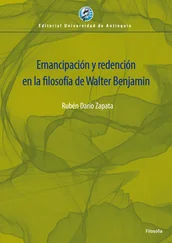“Untergang von Herculanum und Pompeji,” GS, 7.1, 214–20. Translated by Jonathan Lutes.
Broadcast on Radio Berlin, September 18, 1931. The broadcast was announced in the Funkstunde (issue dated September 11, 1931) with an accompanying image of the excavation of Pompeii.
1The Minotaur and the palace in which he lived were not in Thebes, but rather in Crete, in the Palace of King Minos of Knossos. The Athenians annually had to send seven virgins and seven young boys as a tribute.
2This translation is from The Letters of the Younger Pliny, ed. and trans. Betty Radice (London: Penguin Books, 1963), Book Six, Letter 20, 171.
3On May 7, 1902, Martinique’s Mount Pelée erupted, burying the city of Saint-Pierre and killing over 30,000 people.
4 Letters of the Younger Pliny, 171–2. Benjamin has slightly altered the first part of the passage.
CHAPTER 24. The Lisbon Earthquake
Have you ever had to wait at the pharmacy and noticed how the pharmacist fills a prescription? On a scale with very delicate weights, ounce by ounce, dram by dram, he weighs all the substances and specks that make up the final powder. That is how I feel when I tell you something over the radio. My weights are the minutes; very carefully I must weigh how much of this, how much of that, so the mixture is just right. You’re probably saying, But why? If you want to tell us about the Lisbon Earthquake, just start at the beginning. Then go ahead and tell us what happened next. But I don’t think that would be much fun for you. House after house collapses, family after family is killed; the terror of the spreading fire, the terror of the water, the darkness and the looting, the wailing of the injured, and the cries of the people searching for loved ones — no one wants to hear just this and nothing more, and besides, these things are more or less the same in every natural catastrophe.
But the earthquake that destroyed Lisbon on November 1, 1755, was not a disaster like thousands of others. In many ways it was singular and strange, and this is what I’d like to talk to you about. To begin with, it was one of the greatest and most devastating earthquakes of all time. But it was not only for this reason that it moved and preoccupied the entire world in that century as few other things did. At the time, the destruction of Lisbon was comparable to the destruction of Chicago or London today. In the middle of the eighteenth century, Portugal was still at the height of its colonial power. Lisbon was one of the wealthiest commercial cities on Earth; at the mouth of the Tagus river, its harbor, full of ships year in and year out, was lined with trading houses belonging to merchants from England, France, and Germany, and above all from Hamburg. The city had 30,000 dwellings and well over 250,000 inhabitants, roughly a quarter of whom died in the earthquake. The royal court was famed for both its austerity and its splendor. The many accounts of Lisbon published before the earthquake reveal the strangest details of the court’s rigid formalities, how, for instance, on summer evenings courtiers and their families would rendezvous in the main square, the Rucio, where they chatted for a short spell without ever leaving their carriages. People had such an elevated notion of the king of Portugal that one of the many leaflets conveying detailed descriptions of the calamity all across Europe could not fathom that such a great king could also have been affected by it. “Just as the extent of a catastrophe can only be grasped once it has been overcome,” writes this particular chronicler, “the dire ramifications of this frightful case can only be felt once one considers that the king and his wife, altogether abandoned, spent an entire day in a carriage under the most wretched conditions.” Leaflets featuring such passages functioned as newspapers do for us today. Those with the capacity to do so collected detailed eyewitness accounts and had them printed and sold. Later on I will read to you from another such report, one based on the experiences of an Englishman residing in Lisbon at the time.
Yet there’s another, special reason that this event affected people so strongly, that it inspired countless leaflets to be passed from hand to hand, and that almost 100 years later new accounts of the catastrophe were still being printed: the impact of this earthquake was greater than any ever heard of before. It was felt all over Europe and as far away as Africa, a colossal area calculated at two and a half million square kilometers if one includes the farthest reaches where it was detectable. The strongest tremors ranged from the coast of Morocco on one side to the coasts of Andalusia and France on the other. The cities of Cadiz, Jerez, and Algeciras were almost completely destroyed. According to one eyewitness, the cathedral towers in Seville trembled like reeds in the wind. But the most violent tremors traveled through the water. Massive groundswells were felt from Finland to the Dutch East Indies; it was calculated that ocean convulsions progressed from the Portuguese coast to the mouth of the Elbe with tremendous speed, in only a quarter of an hour. But so much for what occurred at the moment of the calamity. The weeks leading up to it saw a series of strange natural phenomena that, after the fact and perhaps not wholly without reason, people looked back on as omens of the impending calamity. For example, in Locarno, in southern Switzerland, two weeks before the catastrophic day, vapor suddenly began rising from the ground. In two hours it had changed into a red mist, which around evening precipitated as purple rain. From then on frightful hurricanes, combined with cloudbursts and floods, were reported across western Europe. Eight days before the quake, the ground around Cadiz was covered with masses of worms emerging from the earth.
No one was more preoccupied with these strange events than Kant, the great German philosopher whose name some of you may already have heard. When the earthquake occurred he was a man of twenty-four, and neither before nor after did he ever venture beyond his hometown of Königsberg; yet he collected all the accounts of this earthquake he could find, with tremendous enthusiasm. The short works he published on the phenomenon constituted the beginnings of scientific geography in Germany. 1The beginnings of seismology, at any rate. I’d like to tell you something about the path this discipline took from that portrayal of the 1755 earthquake up until today. But I must be careful that our Englishman, whose account of his experiences during the earthquake I would still like you to hear, does not get lost in the shuffle. He has been waiting impatiently; after 150 years of being ignored, he’d like once more to have his say, and has allowed me to share only a few words concerning what we now know about earthquakes. But one thing first: they are not what you think. If I could pause for a moment and ask how you would explain earthquakes, I bet the first thing you’d think of is volcanoes. It’s true that volcanic eruptions are often linked to earthquakes, or at least heralded by them. So, for 2,000 years, from the ancient Greeks through to Kant and on until about 1870, people believed that earthquakes were caused by fiery gases, steam from the Earth’s interior and suchlike. But once people began to use measuring instruments and to make calculations, whose subtlety and precision surpass anything you might imagine — and that goes for me as well — in short, once people could verify the matter, they found something altogether different, at least for large earthquakes like the one in Lisbon. They do not originate from the deepest recesses of the Earth — which we still think of as liquid, or more exactly muddy, like molten sludge — but rather from events in the Earth’s crust. The Earth’s crust is a layer roughly 3,000 kilometers thick. This layer is in perpetual upheaval; the masses within it are constantly shifting in an ongoing attempt to find equilibrium. We know some of the factors that disturb this equilibrium, and ceaseless research is being conducted to discover others.
Читать дальше












